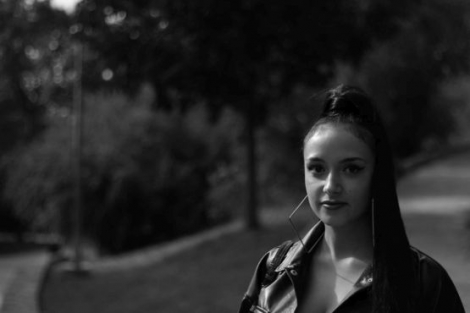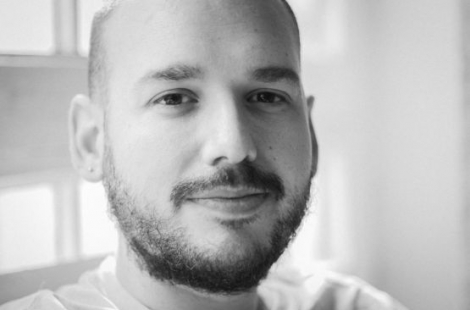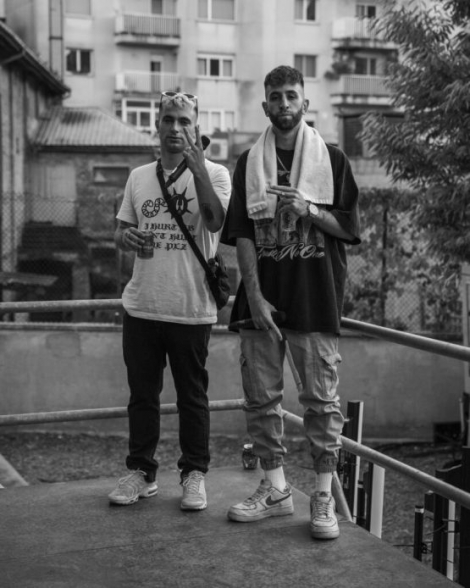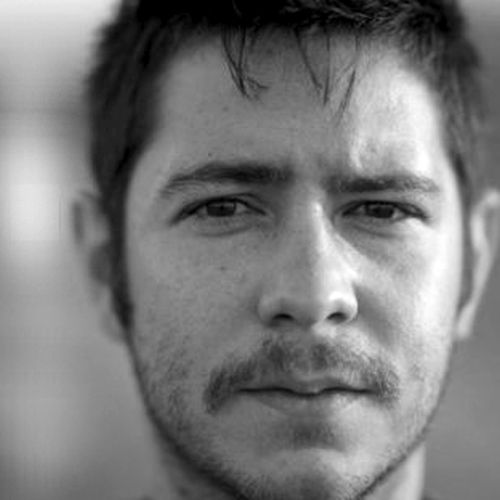The urban music, a generational scream
- Culture Folder
- Trends
- Mar 22
- 12 mins

In recent years, Barcelona and its wider metropolitan area have hosted and witnessed a predominantly young, stylistically evolving movement that has captured generational concerns and our relationship with the city through music, with styles like trap, hip-hop and reggaeton. These artists represent a kind of music known in the city as la urbana.
The debate around what urban music actually is continues to rumble on even today. It is a complex, passionate discussion. Establishing the limits of this genre is not easy. One of the reasons for this is that borders are not always clear; they can be hard to define. Under the umbrella of urban music, we find reggaeton, trap, hip-hop, rap, and the rhythms characteristic of black and Latin music. Where does each of these end and the next begin? On top of that is another relevant phenomenon: as technology advances, accessibility improves and production skills are mastered, urban artists are becoming more and more chameleon-like and working with a wider range of registers. In the words of Sr. Chen, musician and Lildami’s producer of choice: ‘You have to be careful with urban music. The scene is more to do with what’s happening outside, management, awards and record labels than with the artist’.
Beyond its rich ecosystem and diversity of sounds, urban music tends to have a common denominator: a sense of protest, defence of social rights and generational non-conformism. Barcelona – and, by extension, Catalonia – has been a hotspot in terms of activity and the presence of suburban styles. Some of these names have transcended the local sphere and are being played across Spain, or even, in some cases, all over the world.
The origins: from old-school rap to new urban rhythms in Catalan
The city of Barcelona has always been the perfect shop window and worked like a fertile musical biome, and urban music is no exception. Rap came to Catalonia in the late ’90s, thanks to the emergence of Violadores del Verso, SFDK and ToteKing. Hip-hop in Catalan partly owes its good health to the foundations laid by artists like El Disop, Porta and At Versaris, who, by having the courage to rhyme in Catalan, blew apart a series of linguistic stereotypes and prejudices.
Influenced by these innovators, a constant stream of proposals appeared, like those released by Senyor Oca, a hip-hop group created in 2012 in Barcelona that is led by MC Sergi Sala, has made five records to date and is still active today. Next to Senyor Oca, we find current names like Koers, a group from Lleida with a mature sound made up of reggae and dancehall, or the Valencian band ZOO, who combine electronic music with rap and rock. And we have seen the return of Adala already in 2022, widely praised for a sound with hints of afrobeat, wind instruments and reggae. This year, he is releasing Klima: a record that expresses various moral and environmental concerns.
To find the origins of trap in Catalonia, we have to go back to one of the golden chapters of urban music in Spain. A chapter named P.A.W.N. Gang.
First rap, then trap: P.A.W.N. Gang as pioneers
The first Catalan trap artists were self-produced and rose to fame through YouTube. Various acts emerged in this context, through social media and videos uploaded online. This is the case for Pxxr Gvng, a quartet born when its members coincided in the Catalan capital, and for Dora Black, a duo consisting of Barcelona residents Pimp Flaco and Kinder Malo. Then there is Cecilio G, who grew up on and was shaped by the streets of El Poblenou, and puts out lyrics influenced by his time in prison, his father’s death, and addiction. But to find the origins of trap in Catalonia, we have to go back to one of the golden chapters of urban music in Spain. A chapter named P.A.W.N. Gang.
 Portrait of P.A.W.N. Gang. © Arxiu DELIRICS
Portrait of P.A.W.N. Gang. © Arxiu DELIRICSTrap took root in Spain thanks to this group from Barcelona. Though P.A.W.N.’s first musical offering came in 2012, with the single ‘A-Kuatra Set’, it was not until 2016 that they released the first of their three albums, Al final es asho, still considered Spanish trap’s foundational record and, above all, a reworking of the rules of urban music in Catalan. The group’s members – Teuma Thug, Monrra Straps, Lil Guiu, Good Jan, Yung Mare and Willfree – advocate for non-conformism through rhyme: an innovative decision, as until that point, Catalan seemed to be an unsuitable language for this genre. Good Jan is nonchalant about their use of Catalan: ‘It’s the language we’ve used all our lives. And all the rhymes in Spanish have been heard before. In Catalan, it was all brand new’. The P.A.W.N. Gang phenomenon helps to explain the subsequent emergence of groups, collectives and solo artists who followed in their footsteps. ‘Urban music has ended up being integrated into Catalan culture, but we came about from segregation’, says Teuma Thug. And there is pride behind this stance. On the subject of the mixtape Oli d’uliba (‘olive oil’ in Catalan, spelled phonetically), released in 2020, Willfree explains that the title is like their denomination of origin. ‘We’re from la terra, we’re Catalan’, he declares.
Some of the members of P.A.W.N. have tried to pursue a solo career. One of the most successful at doing so has been Teuma Thug, a great example of musical creativity. His music is more sophisticated instrumentally, and incorporates lyrics that invoke his generation’s worries. The artist seeks controversy. He breaks taboos and never minces his words in his songwriting, despite the criticism some of his lyrics might attract. The singer told music magazine Enderrock, ‘Controversy depends on your point of view. The content that wouldn’t be seen as sexist in the USA is perceived that way here, but P.A.W.N. Gang aren’t sexist’.
 Portrait of Sofía Gabanna. © Agus Izquierdo
Portrait of Sofía Gabanna. © Agus Izquierdo
Urban music’s metropolitan eruption
Barcelona has been a nest of talent, witnessing and cultivating various generations of artists that have been working to normalise their music for years and find their place on the commercial and Spanish scene. And they have succeeded.
Lest we forget other, more mainstream, internationally renowned names like Rosalía, Nathy Peluso, Sofía Gabanna and Bad Gyal. The latter – with her strange yet highly effective mix of urban music styles like dancehall, reggaeton, trap and R&B – has become an icon of uninhibited feminism. Since 2016, she has released four albums and several singles that have graced the charts, such as ‘Indapanden’, ‘Internationally’, ‘Pussy’, ‘Tu Eres Un Bom Bom’ and ‘Zorra’. Bad Gyal has said that, at the beginning, she had to protect her music with a defensive kind of energy, and needed to justify and explain her messages. This is a good illustration of how urban music took root here in Catalonia: abruptly, forcing audiences to acclimate to it. Despite this virulence, Bad Gyal presents herself as a ‘really normal girl’, even if she might be represented as a diva sometimes.
 Portrait of La Queency. © Agus Izquierdo
Portrait of La Queency. © Agus IzquierdoThe town of Vilassar de Mar has also given us Katta Lana, part of the self-managed, feminist label El Pecado Records. In the beginning, this company also released music by La Queency, AKA Francina Gorina from Terrassa, who just released her first EP on her own, Pussy Roig (2021). La Queency is a satellite artist; she triumphs from the margins, outside of the most commercial circuits. The rapper, who does not reject success but remains faithful to counter-culture, highlights her social responsibility by saying that ‘belonging to your neighbourhood isn’t about speaking in a certain way. It’s about local consciousness: going to protests and stopping evictions’. The class discourse could have caught on here in Catalonia in a coherent way through trap, but I get the feeling that people are taking the most superficial part and forgetting about the more genuine, authentic meaning’.
The same city, Terrassa, has given birth to one of the most important names in the more commercial side of urban music in Catalan: Lildami, real name Damià Rodríguez, has a degree in Industrial Design Engineering and burst onto the scene in 2017. Since then, the artist’s career has been intense and frenetic, with five albums and around ten singles and EPs. His latest record, Viatge en espiral (2021), encapsulates his fusions of musical genres (a clear example is ‘Ramiro’, in which he experiments with habanera styles). The music of Lildami and his collaborators (Mariona Batalla and Sr. Chen) embodies all the potential of trap and danceable rhythms, while staying in harmony with classic hip-hop, rap and other subgenres, with a genuine, flexible, ever-changing sound. To build his sound, he has drawn inspiration from Catalan bands like Manel and Oques Grasses, as well as from music from the USA, home to many of his main references.
 Portrait of Sr. Chen. © Joana de Querol
Portrait of Sr. Chen. © Joana de QuerolIt is not possible to talk about Lildami without mentioning Sr. Chan: a producer and artist who has built a solo career as a kind of song craftsman. He is one of the influences behind Lildami’s sound, as well as Yung Rajola’s and El Noi de Tona’s. Originally from Lleida, Yung Rajola is representative of a new generation of rappers in Catalan who have forged a peculiar, atypical style. The year 2021 saw the release of the album Cor trencat, and this year, he has dropped ‘La cançó + bonica que he escrit mai’. Meanwhile, El Noi de Tona (who is from Valldoreix, Sant Cugat del Vallès, not Tona) takes his pseudonym from a famous nineteenth-century town crier and offers a musical product that blends new urban trends with the most old-school hip-hop. Also from Sant Cugat, and continuing with this group that makes the Vallès Occidental region a hub of urban music in Catalan, we have Spxxn P, an artist who defines himself as multidisciplinary and will publish his new album Demà el món s’acaba this year (for now, we can just hear a preview of the record: ‘Mermelada’). On the single ‘Travis’, Spxxn P works with Pol Bordas, a rapper from Girona who has just dropped the EP El dia més curt de la setmana, and stands out for his original, sophisticated sound, characterised by samples, contrasting instrumental feels and electric guitars.
Honourable mention must go to Baya Baye and his ‘thug’ style. His local brand of Catalan trap is pure, sharp, filter-free and rebellious. Despite his commitment to social justice, he does not consider himself a political rapper: ‘My politics is to go against politics. I don’t want to be the sound of the Catalan independence movement’. Another key name is Queralt Lahoz, who is on a roll with her mixture of flamenco sounds and hip-hop, with a streak of social responsibility that gives her music the air of protest songs: ‘At the moment, I need to talk about things that hurt me and bother me’, she explains. Meanwhile, Barcelona-based artist Cooba (Carolina Costa) has arrived on the urban scene with a solid, bold, peculiar style and a more nostalgic sound, in which basic elements of pop enter into a dialogue with the Latin rhythms that dominate in genres like rap and trap. One of her iconic songs is ‘2000’, and she recently released Pirineus (2021). Other artists orbiting in the Catalan urban system are names like Caldo, Noxtorn, Massaviu, Kharnassein, La Tia Figa, Lluc, Will.x.o and La Clika Pika.
 Portrait of Flashy Ice Cream. © Arxiu DELIRICS
Portrait of Flashy Ice Cream. © Arxiu DELIRICSSabadell: the scene’s epicentre, with 31 FAM, Santa Salut and Flashy Ice Cream
The co-capital of the Vallès Occidental region has been at the forefront of urban music thanks to a set of artists, groups and synergies that have generated a whole movement. Sabadell has given us groups of the calibre of Flashy Ice Cream. Their albums Brillar o morir (2019) and Don Gelato (2020) have really resonated with a young audience. On top of this generational representation in their lyrics, we also find a firm stance in terms of national conflict, political disillusionment and the need to use the Catalan language: ‘We’ve lived through one of the biggest crises. New generations need to rethink things, on an economic, social and cultural level’.
Another artist from Sabadell, Santa Salut, born in 1998, was shaped by the rap and hip-hop she listened to in her teenage years. She has pointed out that these movements were already very present, even mainstream, years ago. In 2019, she released the EP Conversaciones Internas, and is now one of the most exciting, lauded, inspiring voices on the current urban scene. She stands out for her clearly feminist, anti-fascist, working-class message, with songs that hold ‘all the aggression and frustration felt by new generations’.
Staying in Sabadell, but moving onto a different style, we have 31 FAM, sitting at the top of the urban league thanks to their combination of dancehall, R&B, trap, reggaeton and Latin beats. As soon as they share their songs online, they immediately go viral on social media. 31 FAM have shown that they are the fuel teenagers need ever since they started out in 2017. Jet Lag (2021) is their latest offering, and tracks like ‘Nens del barri’, ‘Valentina’ and ‘Inseparables’ show how important and influential they are. Lil Didi, a member of 31 FAM, maintains that their success is down to the fact that ‘people weren’t happy with the trap being made in Catalan. They needed something better’. The power of urban music lies not only in shining the spotlight on the challenges faced by young people, but also in bringing them together and connecting them.
Urban music in Catalan is undoubtedly in a phase of expansion and constant reappraisal. It is a living, organic movement in which artists feed off each other and react to the world around them.
In an interview for El Nacional, the members of 31 FAM, Flashy Ice Cream and P.A.W.N. Gang agreed on their view of trap, as a form of expression for channelling social activism and denouncing injustice, beyond all labels: ‘We make music. We do what we want, and that’s it’, declared a member of 31 FAM.
Whichever way you look at it, urban music in Catalan is undoubtedly in a phase of expansion and constant reappraisal. It is a living, organic movement in which artists feed off each other and react to the world around them. They all flourish, merge and intertwine. All of this is proof of young people’s need to communicate; they see urban music as an accessible tool (self-production has played an important role in this democratisation process) for letting out their euphoria, rage, incomprehension and confusion as they face all the contradictions of our time. So, la urbana is not just a channel for artistic expression: it offers reliable evidence of what today’s young people are feeling, thinking and experiencing.
The newsletter
Subscribe to our newsletter to keep up to date with Barcelona Metròpolis' new developments




